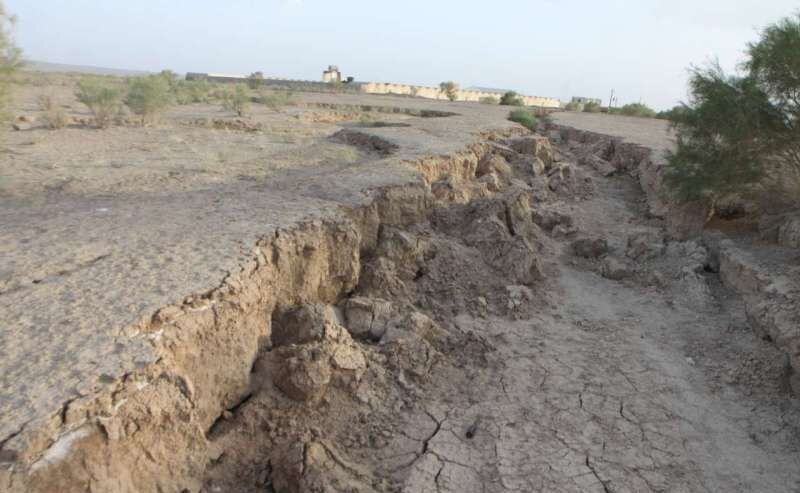Evidence suggests climate change may trigger earthquakes: expert

TEHRAN – There is evidence that faults triggered by climate change may lead to the occurrence of earthquakes, Mehdi Zare professor of engineering seismology at the International Institute of Earthquake Engineering and Seismology, has said.
“Climate change is a regional issue that could lead to large migrations,” IRNA quoted Zare as saying on Tuesday in a meeting held on the occasion of science promotion week.
Land subsidence has already occurred in 400 out of 609 plains of the country, IRNA reported.
Land subsidence, a gradual settling or sudden sinking of the Earth's surface due to subsurface movement of earth materials is mainly caused by aquifer-system compaction, drainage, and decomposition of organic soils, underground mining, oil and gas extraction, hydro compaction, natural compaction, sinkholes, and thawing permafrost.
Subsidence results in significant economic losses in the form of structural damage and high maintenance costs. This affects roads and transportation networks, hydraulic infrastructure, sewage systems, buildings, and foundations. The total damage worldwide is estimated at billions of dollars annually.
He stated, “In Iran, 400 plains, especially in Tehran, Alborz, and Isfahan provinces are grappling with subsidence.”
Some 96 billion cubic meters of water is consumed in Iran annually, while the country's total renewable water resources are only 90 billion cubic meters, he added.
Effective factors in land subsidence
Reports show that 98 percent of the subsidence is caused by excessive extraction of underground water and mismanagement of water resources.
Geologists call subsidence a “silent earthquake” because an earthquake is instantaneous and its effects are visible at the same time, but subsidence is the cause of environmental depletion and its impact appears gradually; which is becoming a big threat in the country.
With the spread of droughts and lack of proper water management, the gradual land subsidence has become a routine threat to the country.
When the amount of harvest is greater than the amount of nourishment of the underground aquifers, the earth moves downward and finally, the soil particles are compressed together, in such a situation, the phenomenon of subsidence takes on another meaning; It means "death of aquifers".
The scope of this man-made phenomenon has advanced to such an extent that researchers in this field describe it with words such as "cancer", "irreversible risk" and "death of the earth".
In order to give a perspective of the country's subsidence rate, the National Cartographic Center started a project in this field in 2016.
Morteza Seddiqi, an official with the Organization, told ISNA that using satellite data and images is one of the methods that have been implemented to check the rate of subsidence of the whole country.
“Based on the surveys carried out on these images, we have identified as many as 252 subsidence areas in the country.”
In 2021, Gholam-Ali Jafarzadeh, the former head of the National Cartography Center, lamented that some 29 provinces are currently at risk of subsidence.
He named two factors of climate change and human intervention as the most important factors of land subsidence in the country and noted that it is expected that we take measures to reduce the pressure on the environment.
He added that 80 percent of the groundwater is withdrawn annually in Iran, which outpaces the global rate.
In the whole world, water resources withdrawal is between 3 to 20 percent, and when it reaches 40 to 60 percent it is considered problematic, and it will be a crisis when exceeding 60-80 percent, he noted.
Over the past decades, some of the aquifer levels dropped by 100 centimeters.
Inefficient irrigation methods in addition to digging illegal wells are the other main causes of groundwater extraction-induced subsidence, as out of 50,000 wells pumping underground water resources in the capital, 30,000 are illegal.
It should be noted that over the next 40 years, the country's temperature will rise by 2.6 degrees on the Celsius Scale, which will increase the country's need for more water resources.
MT/MG
Leave a Comment